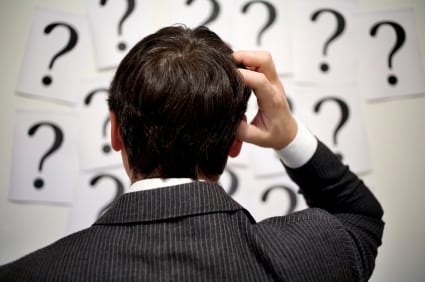Are you ever tempted to take what you read or see for granted, without really taking a closer look? If so, you may be skipping out on important insights. Read on for tips on how to develop your critical thinking skills.
”Productivity is never an accident. It is always the result of a commitment to excellence, intelligent planning, and focused effort.” – Paul J. Meyer
In other words, you will never be productive by chance, you have to actively strive to improve your methods, test your theories, deeply and wholly think about the task you want to perform, be it for your job, family or studies.
Productivity is based on the decisions you make every single day, and the decisions you adopt are a reflection of your ability to infer and develop the best conclusion from the information you have. This is precisely the function that critical thinking has.
Critical thinking is, briefly, the mental activity that has the specific goal of bringing about an improvement by using efficiently our capacity to reason and infer conclusion from the facts we have.
“…They have hearts with which they do not understand, they have eyes with which they do not see, and they have ears with which they do not hear. Those are like livestock; rather, they are more astray. It is they who are the heedless.” (7:179)
This is the description in the Qur’an for those who refuse to use their intellect, the very thing by which Allah [SWT] has honoured us with above every other creature.
Here are some tips to develop critical thinking.
1. Problem Definition
Delimit your problem very clearly. You need to have a clear cut notion of the problem you want to solve. Critical thinking is “purposeful thinking”. It needs a purpose.
What is it exactly that you want to achieve? Be very specific about the outcome you want to reach. This is equivalent to knowing exactly what your destination is even though you don’t know yet how to reach it.
Review what you already know about the problem. What are your assumptions? Are they based on objective truth and solid proofs? You need to explicitly reveal the assumption you have and assess whether they are sound or based on opinion.
2. Data gathering
Once you know what kind of problem you are dealing with, you need to start searching for related data.
I want to stress the need to deal with actual facts because if you start conjecturing on hearsay, or possible but not confirmed data, you are bound to waste time and most likely commit to a decision that might not benefit or even backfire on you.
Be open minded when gathering every piece of information you are presented with.Listen and pay attention even if what’s being said goes against your beliefs.
3. Processing
After gaining a sufficient amount of information, start analyzing. This stage is where the difference between an average thinker and a critical thinker is revealed.
Don’t discard anything yet nor make judgments. As you come across a new piece of information keep asking yourself:
Why? What does it really mean? How does this change things? What are the implications?
Imagine the information you get as pieces of a jigsaw puzzle and always have the bigger picture in mind. Tentatively try to link information together. How does something that you already know connect to this new information?
As you listen to people’s opinions, try to determine their motivation. Put yourself in their position. Identify the subtle changes in tone, facial expression or body language. Is there something they are not telling you? Is there something worrying them?
“And among them are those who listen to you. But can you cause the deaf to hear, although they will not use reason?” (Surah 10:42)
While you read a report or an academic text, try to understand why the writer felt the need to add particular information. What are the premises of the argument? Does the conclusion follow? Analyze the language used, try paraphrasing the sentenceand make sure you understood the points. In fact you need to ask yourself what the key points are.
The more meaningful and targeted questions you ask, the better answers you get. You might have noticed by now that the core factor in critical thinking is the questioning method you use. To get relevant information you will need to ask relevant questions.
”The purpose of critical thinking is, therefore, to achieve understanding, evaluate view points, and solve problems. Since all three areas involve the asking of questions, we can say that critical thinking is the questioning or inquiry we engage in when we seek to understand, evaluate, or resolve.” (1)
4. Evaluating and Summarizing
Our history teacher used to repeat a sentence: “If you can’t explain it, it means you haven’t understood it”.
Think aloud. Summarize or list the most important points in order of importance. Be sure to put the problem in the easiest terms possible. Make it so simple that even someone who has no previous knowledge about your field or subject would understand you.
“If you can’t explain it simply, you don’t understand it well enough.” -Albert Einstein
5. The Solution
When you search for solutions be sure that you brainstorm only for solutions. Even if you think you found a very good answer to the problem, don’t stop the creativity flow.
Survey the possibilities. Ask yourself “what if” questions. What would happen if you followed a specific solution over another?
Once you have all the possibilities sorted out, don’t start right away by choosing the best one; rather start by eliminating the least doable or suitable.
If you really feel stuck at a point, stop trying to find the best solution. Serially think what the worst possible solution could be and rule it out. Do the opposite!
There will be cases in which you will have a propensity to follow a certain decision without having a solid motivation.
Remember, when you decided to use critical thinking it was because you were interested in finding the real solution, the truth. Be ready to accept the possibility that your first hunch was completely biased, or wrong.
Develop Your Critical Thinking Skills
Be patient. Critical thinking, as with all skills, requires practice and consistency to be developed.
Be creative in finding solutions to capitalize your productivity as critical thinking is enhanced by creativity.
Creativity and critical thinking have more in common than you think. They both require us to see something that is not there, dragging us to the world of the possible and yet not achieved. They both lead us to think differently about what’s around us, what we already know and the diverse uses we can make of ordinary things.
Critical Thinking Exercises
Exercise critical thinking by reading a passage from a newspaper, a story or simply look at a picture. Try to deduce as many things as you can and be mindful of the details.
Take an abstract painting and try giving different interpretations of what you see, looking at it from different perspectives; try looking at it upside down!
Pick two random words and create a link between them no matter how absurd it may seem.
Reference:
1) Maiorana, Victor P. Critical Thinking Across the Curriculum: Building the Analytical Classroom. 1992.
About the Author
Sister Jihan Anwar is an MIS student sharing her musings with the team at MuslimYouthMusings and working as a journalist at the National Yemen Newspaper.



